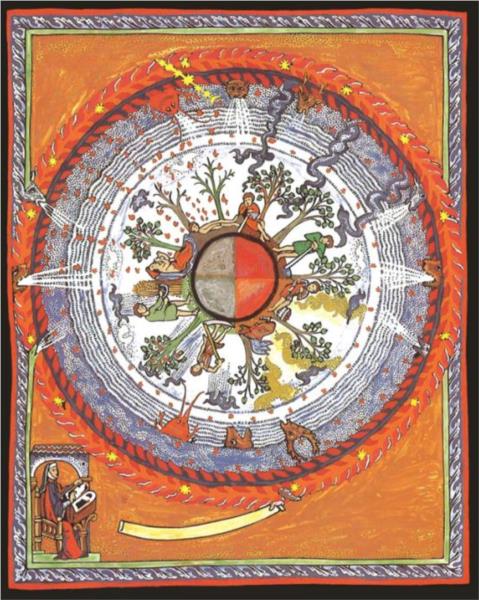Menstrual cycles create additional challenges for autistics to regulate their systems due to intense periodical hormonal shifts. This often leads to serious depressive episodes and loads of annoying physical symptoms. It is estimated that 92% of autistics with a menstrual cycle suffer from PreMenstrual Dysphoric Disorder (PMDD), an extreme form of premenstrual syndrome (PMS).
Understanding and optimising your endocrine system is a game-changer. Let’s delve into how you can hack your endocrine system to improve your well-being, manage symptoms, and enhance your quality of life.
Understanding the Endocrine System
The endocrine system is a network of glands that produce and release hormones. These hormones regulate various body functions, including metabolism, growth, mood, and reproductive processes. For autistics, understanding and managing hormonal health can be particularly beneficial. It’s all about finding a balance and ease.
Key Glands and Hormones
- Hypothalamus: Controls the pituitary gland and regulates body temperature, hunger, and thirst.
- Pituitary Gland: Known as the “master gland,” it controls other endocrine glands and releases hormones like growth hormone, prolactin, and oxytocin.
- Thyroid Gland: Produces hormones that regulate metabolism.
- Adrenal Glands: Produce cortisol and adrenaline, which help manage stress.
- Ovaries: Produce estrogen and progesterone, which regulate the menstrual cycle and reproductive health.
The Menstrual Cycle and Autism
As I said in my article on menstrual cycles, not every autistic is created equal. A menstrual cycle is a huge aspect to take into account when we talk about autism. Our bodies are cyclical. People who don’t menstruate function on a 24-hour ‘sleep-wake cycle’ called the circadian rhythm while menstruators have an infradian cycle.
During their menstrual cycles, autistics experience heightened sensory sensitivities, fluctuations in mood and energy. Having an infradian cycle means that your body moves through seasons. Some people love winter, others prefer autumn. What is established is that your body needs more rest in winter than in summer. Following the natural seasons of your cycles will bring you more ease and balance.
Seasons of the Menstrual Cycle
- Winter – Menstrual Phase (Days 1-5): The shedding of the uterine lining. Energy levels might be lower, and rest is crucial.
- Spring – Follicular Phase (Days 6-14): Estrogen levels rise, leading to increased energy and improved mood. It’s a great time for planning and engaging in social activities.
- Summer – Ovulation (Day 14): A peak in estrogen and luteinising hormone. Some may experience heightened sensory sensitivity.
- Autumn – Luteal Phase (Days 15-28): Progesterone rises, which can lead to mood swings, fatigue, and increased sensory sensitivity.

Finding Harmony and Alignment
Tracking Your Cycle
Use a journal or an app to record your symptoms, sensitivities, mood, energy levels, and any physical changes. It is much easier to do this if you have a smart watch that will record you basal temperature at night, your sleep, heart rate, period and ovulation etc.
Tracking will help you to identify the phases you struggle with and seek adequate solutions to remedy to your struggles. It will also increase your general awareness. Maybe you don’t really want to quit your job if you only feel like that a couple of days a months. You will also be able to identify the times when you feel particularly productive and good about yourself. This will help you to schedule your life accordingly.
Nutrition to support you through your seasons
As I mentioned above, your cycle works in 4 seasons. During each of these seasons you will have different needs and wants to address.
One of the aspects that will change throughout are your cravings. A craving is really just your body asking you for a quick fix. You might crave lots of sugary and caloric foods just before and during your period. This is because your body didn’t get a chance to healthily stock up the right nutrients before your winter/period. If you crave chocolate and bananas. It’s because your body needs magnesium and potassium to ease cramps.
A diet rich in whole foods, lean proteins, healthy fats, and complex carbohydrates can support hormonal balance. Consider incorporating the following:
- Leafy Greens: Spinach, kale, and broccoli are high in magnesium, which helps reduce PMS symptoms.
- Fatty Fish: Salmon and mackerel provide omega-3 fatty acids that support brain health and reduce inflammation.
- Seeds and Nuts: Flaxseeds, pumpkin seeds, and almonds can help balance estrogen levels.
Cyclical routine
Whether we are talking about your workouts, personal projects, artistic projects, career etc. doesn’t matter. You will notice when you start tracking your cycle that you are much more inclined to certain activities at certain times. You may reach peak focus and productivity in your luteal phase (autumn) and creativity around the time of your ovulation (summer).
Once you have that knowledge, you can start to adjust your life to make the best of your cycle. If you have extreme sensory sensitivities every month around the same time, avoid scheduling social events during that phase.
Of course not everything can be scheduled the way you want, focus on what you can adjust.
Physical routine
Regular physical activity helps to regulate hormone levels, the nervous system and overall mental health. Sustaining a bare minimum of exercise like walking throughout your cycle will be beneficial.
You can also create a seasonal workout plan: swimming in your spring, pilates in your summer, yoga in your autumn and a deep stretching and breath work routine in your winter.
Work routine
You will notice that it’s probably easier for you to focus and be extra productive at different times, so try to schedule your work and projects accordingly. If you have a long-term project like writing a book or doing a PhD, you could be much more productive by only working on it 2-3 weeks per months and resting during the time when your body is the least inclined to work. During that ‘break’ you could focus on creative projects instead or simply be. Rest and reset.
Creative Flow
If you pay close attention to your cycle, you will notice that your creativity can peak at certain points. Whenever that happens for you, find a hobby or project to channel your creativity into something positive.
